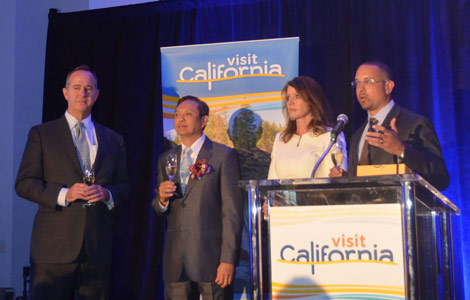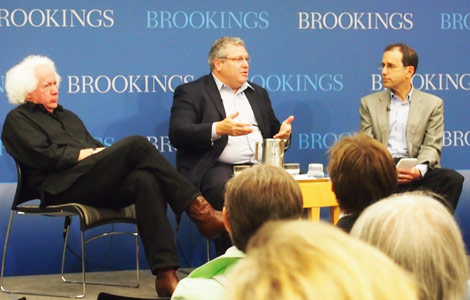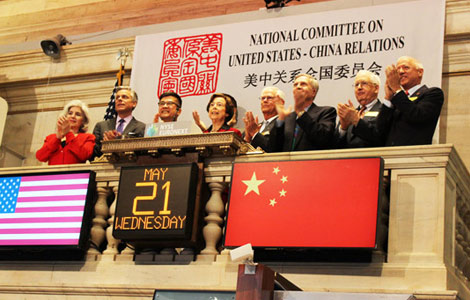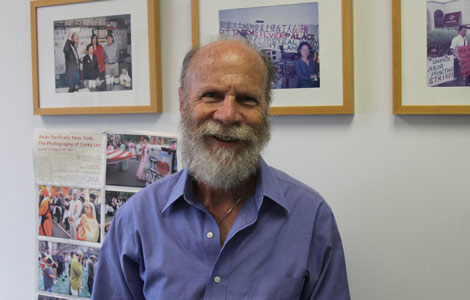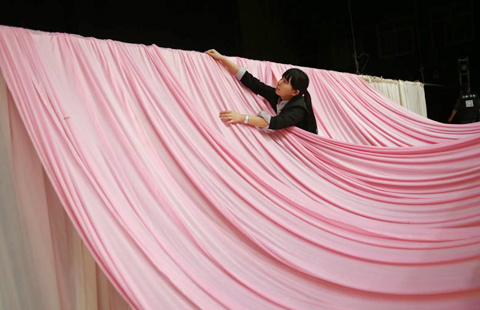Poverty high with NYC Asians
Updated: 2014-05-28 11:34
By Amy He in New York (China Daily USA)
|
|||||||||
Asian immigrants have the highest and fastest-growing poverty rates in New York City, with close to one-third of them living in poverty as of 2012, according to a new report.
The CEO Poverty Measure report by the Office of the Mayor gives overall poverty rates from 2005 to 2012 and focuses on the years since the start of the financial recession in 2008. The city's poverty rate rose to 21.4 percent in 2012 from 19 percent in 2008, with the borough of Queens seeing the biggest increase in poverty, 21.9 percent in 2012 from 16.4 percent in 2008, the report shows.
Half of Asian New Yorkers live in Queens, and 29 percent of Asians in the city live in poverty as of 2012, compared to the 25.7 percent of Hispanics and 22.5 percent of blacks who do. The poverty rates for Asians increased the most between 2008 and 2012, showed the report released at the end of April, with much of it due to language barriers and non-immigrant citizens who have no access to the city's welfare system.
Increases in poverty were "particularly pronounced" for Asians and non-citizens, two groups that share considerable overlap, the report said.
"Poverty has grown fastest for the city's Asian population and for non-citizens, two overlapping groups who are heavily represented in Queens. Of the city's 3.1 million immigrants, 1.5 million are non-citizens and, of those, approximately one-third is unauthorized immigrants. Unauthorized immigrants are ineligible to receive most government benefits but many have native-born children who are eligible for such benefits," the report said.
The Asian population in Queens is growing dramatically - the 2010 census showed that it had increased 30 percent in the last decade - and many Asian immigrants often find job opportunities for low-skill, low-paying jobs in Queens.
"Even if poverty rates stayed stable, just the sheer growth in our community means that there's thousands of additional working poor that come into our country every day," said Howard Shih, census programs director at the Asian American Federation, a non-profit organization that represents community service agencies in the Northeast.
Shih said that statistics often give the impression that the Asian community is doing really well, when in reality the Asian community often doesn't have access to social-service agencies, most of which are often poorly funded.
"Funding from local and state level agencies that serve Asian Americans is not comparable to the actual proportion of the population," he said. "There also hasn't been a huge priority to make sure that the language services exist within the organizations that serve the community in need. So there's both the funding and the skill level, there's a need to improve the availability of those things."
One Flushing, a non-profit organization that helps small business owners in Flushing, a predominantly Asian neighborhood in Queens, held its first immigrant resource fair earlier in May to help the Flushing community expand its economic opportunities by connecting them to city and state agencies.
"City and state agencies that are taxpayer funded don't often do the appropriate outreach to people in Flushing, whether because of language or cultural competency, they just don't know how to reach out to the people here," said John Choe, director of One Flushing. "We felt that it's really important to educate people about the resources that are available and to introduce people to the right people in these agencies so that they can get the appropriate help that they need."
Choe said that he often talks to city agencies and elected officials who have "many misconceptions" of the neighborhood that have led to decisions that have either negatively impacted the community or made economic opportunities harder to pursue. Parking, a long-time concern for Flushing residents, was made more difficult with the sale of Municipal Parking Lot 1 to a private company, and what Choe said were complaints from the community about the lack of accessible public transport to the Flushing area.
"There is a perception in the government that Flushing is doing very well as a community and therefore, we don't need the same kinds of attention that other neighborhoods receive, or the same amount of resources," he said. "It's this idea that Asian Americans as a community are doing very well compared to other racial and ethnic groups. What it does is it makes them less accountable in the government, and it makes the government less in tune with what's going on in the Asian American community."
Asian households have the highest median income in the US - more than $68,000 in 2012 dollars, according to the US Census Bureau - and are the second-highest income earners in New York City after non-Hispanic whites, based on a report released by the City University of New York. But that neglects the "pockets of poverty" that exist within the Asian community within New York City, said Shih.
There are also more visible signs of poverty within the Queens community, particularly with Asian seniors, said Douglas Nam Le, policy director at Asian Americans for Equality, an advocacy group.
Particularly among Asian immigrants in Queens who are poor, there is a high rate of poverty among seniors who are immigrants, those who haven't been in the United States long enough to receive Social Security benefits that other seniors depend on.
"In Flushing, for example, there is only one organization that provides food-pantry services. There's always a line every single day the food pantry is open. Dozens and dozens of who I mainly see as Asian, Asian seniors, that are accessing that," Le said. "For that me, that demonstrates a big need in terms of income and food insecurity among seniors."
amyhe@chinadailyusa.com
(China Daily USA 05/28/2014 page2)
Most Viewed
Editor's Picks
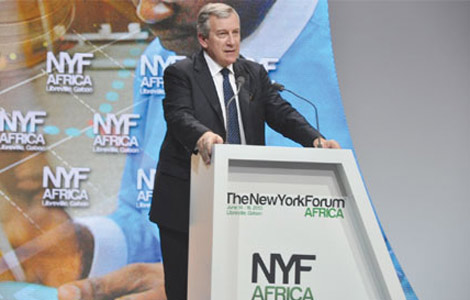
|

|
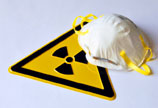
|

|

|
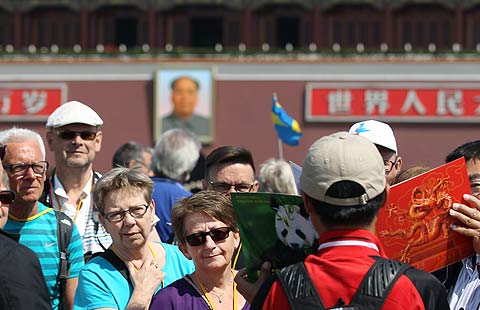
|
Today's Top News
Action plan drawn up to counter cyberthreats
Snowden says would like to go home
Opinion: US-Japan alliance and China
Opinion: Cooperation to overcome rift
Google's self-drive plan
Apple to buy Beats for about $3b
US commerce delegation visits Cuba
Chinese general labels US No.1 cyber thief
US Weekly

|

|



